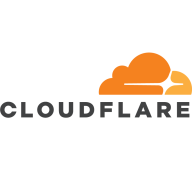


Fastly Next-Gen WAF and Azure Front Door compete in web application security and delivery optimization. Fastly Next-Gen WAF stands out for customer satisfaction due to its intuitive setup, while Azure Front Door offers comprehensive features justifying its higher costs.
Features: Fastly Next-Gen WAF provides strong security capabilities, real-time visibility, and flexible configuration, making it attractive for simplicity and effectiveness. Azure Front Door delivers global load balancing, application acceleration, and robust security, appealing to businesses needing a comprehensive global solution.
Ease of Deployment and Customer Service: Fastly Next-Gen WAF is recognized for seamless deployment and effective support, allowing quick integration. Azure Front Door offers scalable deployment but requires intricate setup due to its broad feature set, which can be complex for smaller organizations.
Pricing and ROI: Fastly Next-Gen WAF is noted for cost-effectiveness, offering significant ROI without a substantial upfront investment. Azure Front Door involves higher initial costs, justified by its extensive feature set and scalability, providing long-term benefits for businesses requiring extensive functionalities.



Cloudflare is a highly-regarded Content Delivery Network (CDN) and a Distributed Denial-of-Service (DDoS) protection solution. The robust global connectivity cloud platform that is Cloudflare ensures users are able to connect to the Internet quickly, securely, and reliably. Cloudflare is one of the world's largest networks in the marketplace today. Using Cloudflare, businesses, educational entities, NGOs, vloggers, bloggers, and anyone else with an internet presence can experience more secure, faster websites and applications.
Currently, there are millions of Internet locations on Cloudflare, and the Cloudflare network
continues to grow every day by the thousands. The solution is able to fulfill the requests for
millions of websites seamlessly and serves on average 45 million HTTP requests per second.
Cloudflare has safe, secure data centers in close to 300 cities worldwide to ensure every
client request is filled as quickly as possible. It is Cloudflare’s edge network that makes this
possible by keeping content and other services as close to each client as possible, so the
information requests are always only seconds away.
Many organizations that work in democracy, civil society, human rights, or the arts are able to
access Cloudflare's highest levels of protection for free via Project Galileo. Additionally, official
election websites can be secured from hacking and fraud through Cloudflare’s Project
Athenian, also at no additional cost.
Cloudflare can also help organizations of all sizes develop a robust zero-trust strategy to
ensure the highest levels of productivity and profitability. Employees, stakeholders, and end users have a greater level of satisfaction and overall improved user experience, which can, in
turn, result in higher revenues and overall ROI. Zero-trust and BYOD (bring your own device)
access ensure end users and employees always have the best resources and technology
available to them at all times.
Cloudflare benefits
Cloudflare has many benefits. Some of its most valuable benefits include:
- Faster load times
- Robust DNS security
- Intuitive cloud Web Application Firewall (WAF)
- Free universal SSL
- Image enhancement
- Automatic browser caching
- Next-generation cloud load balancer
- Accelerated Mobile Pages (AMP)
- Rate limiting
- Minification
- Zero-trust capabilities
- Cost-effective
- Reduced carbon footprint
Reviews from real users
“Many websites require an SSL certificate because they sell stuff and want SSL. Cloudflare
comes with an SSL certificate built in. It's automatic. You sign yourself up for Cloudflare, and
an SSL certificate automatically protects your website. If you have a connection between your
website and your host, the server, Cloudflare, and the host, you don't necessarily need a
certificate.” Spencer M., Owner at Tech Exchange
“What I like best about Cloudflare is that my company can use it to trace and manage
applications and monitor traffic. The solution tells you if there's a spike in traffic. Cloudflare
also sends you a link to check your equipment and deployment and track it through peering,
so it's a valuable tool.” Daniel P., Network Engineer at Ufinet
“The most valuable feature of Cloudflare is the GUI. You are able to control the solution very
well through the interface. There is a lot of functionality that is embedded in the service.” PeerSpot user, Competence Center Manager at a tech services company
Azure Front Door is employed for securing external traffic, global load balancing, integrating web application firewalls, enabling disaster recovery, and enhancing application accessibility.
Organizations leverage Azure Front Door to support data publishing, act as a CDN, and ensure low latency for global users. Clients use it to protect numerous internet-accessible applications, integrate with DNS, and implement custom routes. Favored for caching web content and securely, efficiently distributing traffic to backend services, Azure Front Door offers SSL offloading, traffic inspection, and global scalability. Users value its affordability, ease of implementation, and web application firewall. Azure Front Door provides rich security features, traffic management, and URL rewriting. Load-balancing capabilities enhance performance with additional content security policies and bot protection. Integrations, including with GitOps, along with combined CDN and load-balancing, are also highlighted.
What are the most important features?Azure Front Door finds usage across multiple industries due to its versatile applications. E-commerce companies benefit from improved global accessibility and speed, while financial institutions leverage its security features for protecting sensitive data. Media and entertainment sectors use its CDN capabilities for seamless content delivery, and healthcare providers rely on its compliance and protection standards for patient data security.
The Fastly Next-Gen WAF (powered by Signal Sciences) provides web application and API protection, RASP, rate limiting, bot protection and DDoS purpose built to eliminate the challenges of legacy WAF.
We monitor all Web Application Firewall (WAF) reviews to prevent fraudulent reviews and keep review quality high. We do not post reviews by company employees or direct competitors. We validate each review for authenticity via cross-reference with LinkedIn, and personal follow-up with the reviewer when necessary.